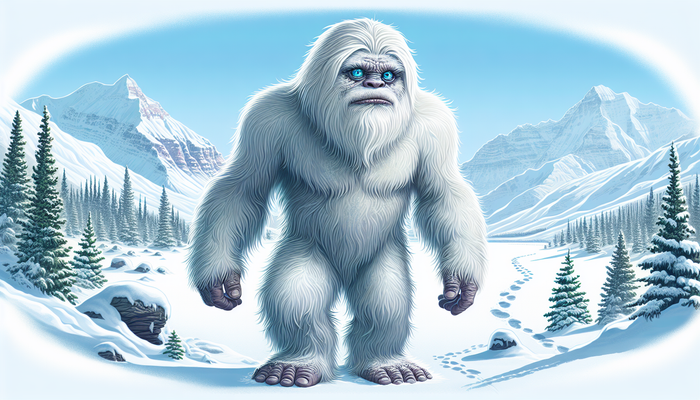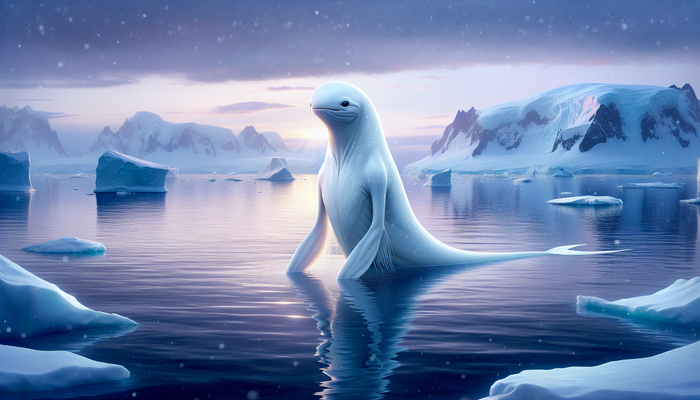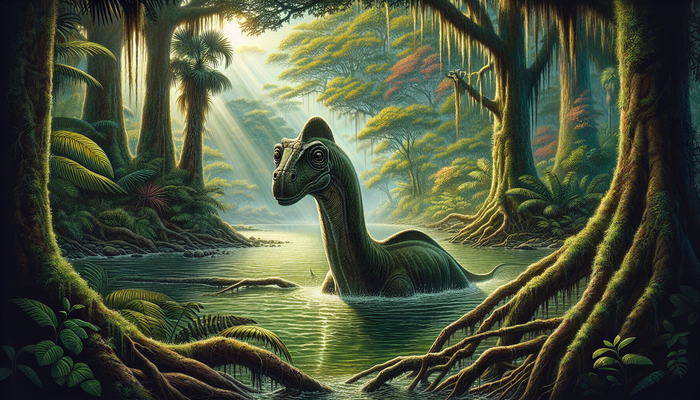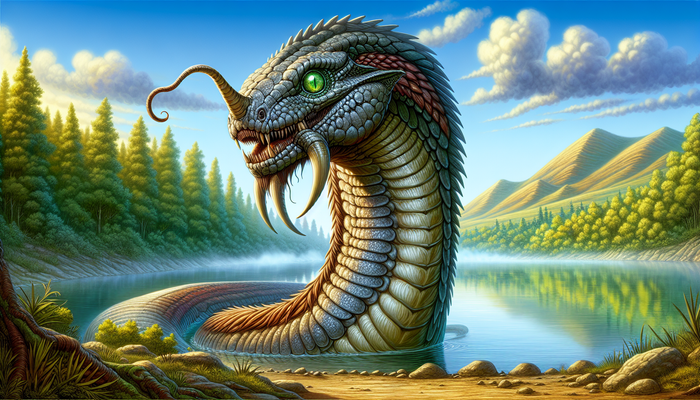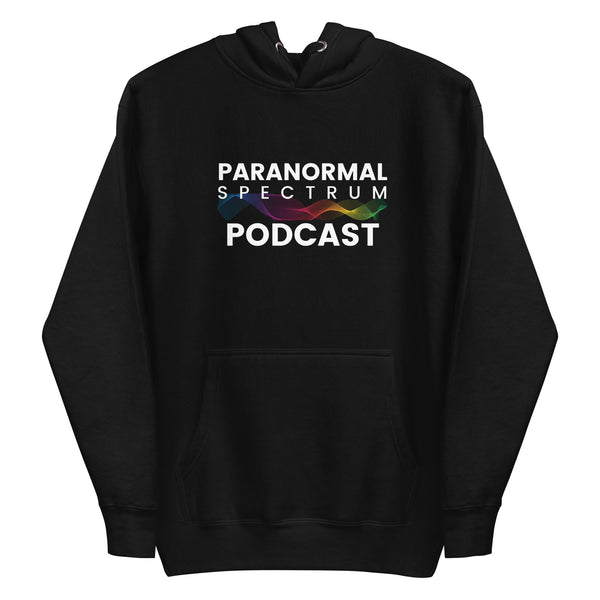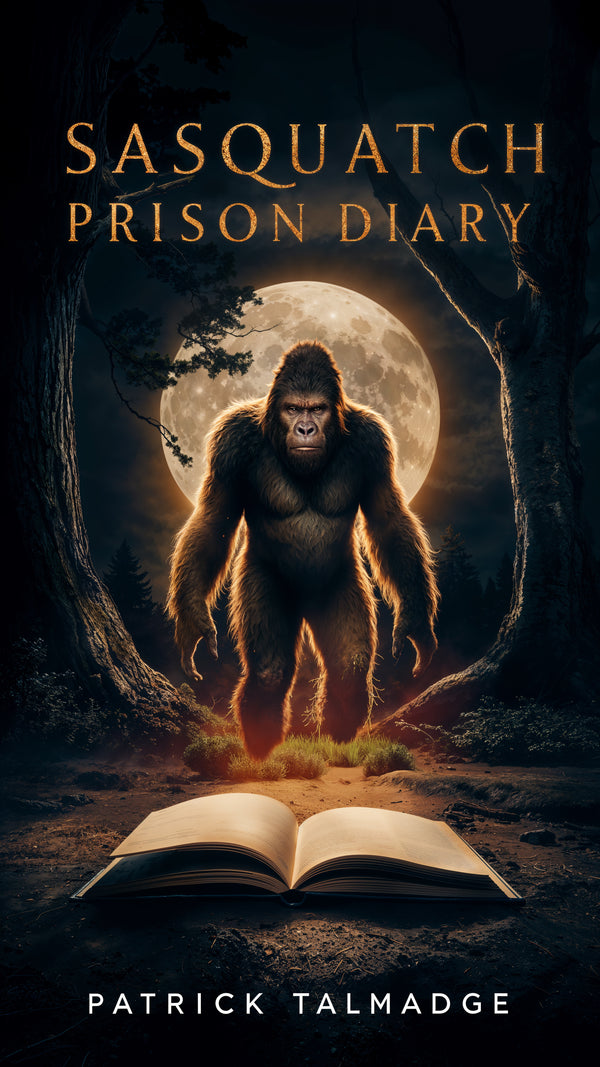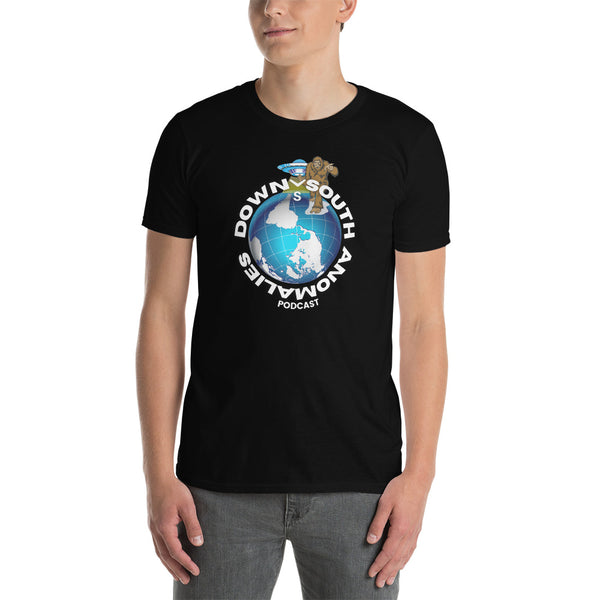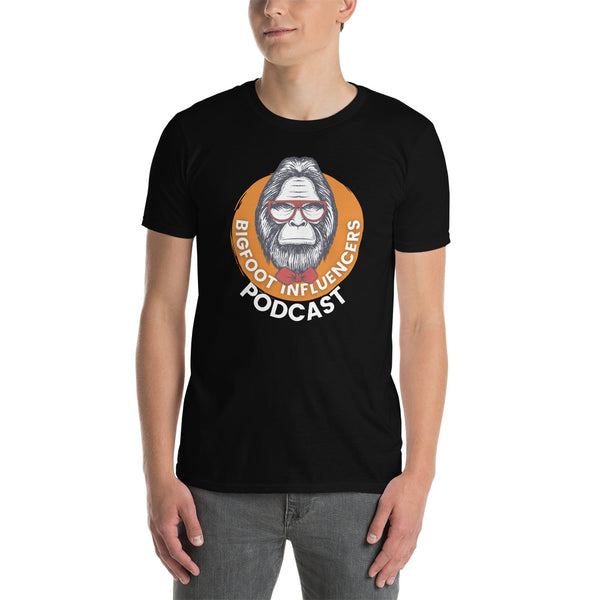Discover the Squonk Cryptid: Pennsylvania's Saddest Legend
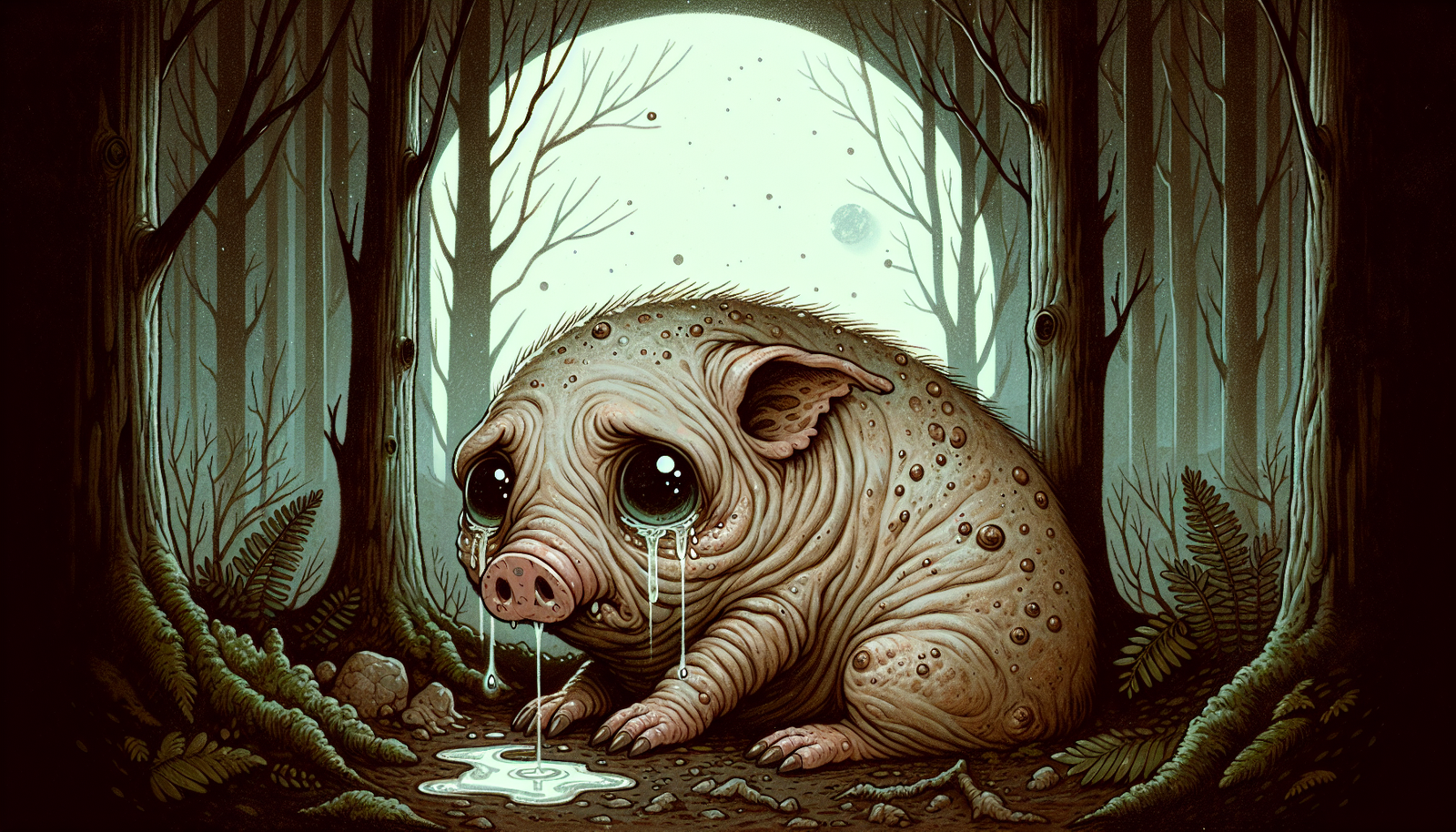
By Oliver Bennett, Cryptozoologist
Origins of the Squonk
The legend of the Squonk emerged during a time of great change in Pennsylvania's landscape. As the 19th century drew to a close, the state's vast forests were rapidly disappearing under the relentless march of the timber industry. It was in this context of environmental upheaval that the Squonk first made its appearance in the stories told around lumberjack campfires.
The earliest written account of the Squonk comes from William T. Cox's 1910 book, "Fearsome Creatures of the Lumberwoods, With a Few Desert and Mountain Beasts." Cox, a forester by trade, described the Squonk as "probably the homeliest animal in the world, and knows it." This simple description laid the foundation for a creature that would come to embody the very essence of self-doubt and insecurity.
Cox's book was more than just a collection of tall tales. It was an attempt to preserve the rich oral tradition of the lumberjacks, whose way of life was rapidly changing as the forests they once worked in dwindled. The Squonk, with its ill-fitting skin and constant weeping, became a metaphor for the displacement and loss experienced by these workers as their familiar world transformed around them.
The timing of the Squonk's emergence is significant. As the industrial revolution reshaped the American landscape, there was a growing sense of disconnect between humans and the natural world. The Squonk, in its misery and isolation, reflected this unease. It was a creature born of a changing world, one that no longer seemed to have a place for the wild and untamed.
Physical Description: A Portrait of Sorrow
Imagine, if you will, a creature about the size of a small pig, but with a visage so unfortunate that it can barely stand to exist. The Squonk's most defining feature is its loose, ill-fitting skin, covered in warts and blemishes. This skin hangs in folds and wrinkles, as if the creature is wearing a suit several sizes too large. Its face is a picture of perpetual sadness, with large, watery eyes that constantly overflow with tears.
The Squonk's scientific name, Lacrimacorpus dissolvens, is a stroke of linguistic brilliance. Derived from Latin, it translates to "tear body dissolving," encapsulating the creature's most unique and tragic characteristic - its ability to dissolve into a pool of tears when cornered or frightened.
This physical description is more than just a flight of fancy. It speaks to deep-seated human insecurities about appearance and self-worth. The Squonk's constant weeping is a manifestation of emotional distress that many can relate to - the feeling of being trapped in a body or a life that doesn't feel quite right.
The warts and blemishes that cover the Squonk's skin serve as visible markers of its perceived flaws. In a world that often places undue emphasis on physical appearance, the Squonk stands as a stark reminder of the pain that can come from feeling unattractive or out of place.
But perhaps the most intriguing aspect of the Squonk's physiology is its ability to dissolve into tears. This trait goes beyond mere self-defense; it's a powerful metaphor for the desire to disappear when faced with overwhelming emotions or situations. Who hasn't, at some point, wished they could simply melt away when confronted with their deepest insecurities?
Behavioral Traits: The Art of Avoidance
The Squonk's behavior is as distinctive as its appearance, characterized by an overwhelming shyness and a desperate desire to avoid being seen. These traits paint a picture of a creature perpetually at odds with its own existence, forever seeking to escape the gaze of others and, more poignantly, its own reflection.
Preferring the dim light of twilight and dusk, the Squonk ventures out when the world is caught between day and night. This choice of timing is no coincidence - it's when shadows are long and details are obscured, offering the Squonk some respite from its own appearance. The creature is said to be particularly averse to moonlit nights, fearing that it might catch a glimpse of itself in a reflective pool of water.
This avoidance of its own reflection is a powerful allegory for self-image issues. It speaks to the human tendency to avoid confronting aspects of ourselves that we find difficult to accept. The Squonk's fear of seeing itself mirrors the way many people struggle with self-acceptance, preferring to hide from their perceived flaws rather than face them head-on.
Tracking a Squonk is said to be a unique challenge. Hunters don't follow footprints or scent trails, but rather the path of tears left behind by the constantly weeping creature. This tear-stained trail is both a literal and metaphorical representation of the emotional baggage we all carry with us.
The most famous account of a Squonk encounter comes from a man named J.P. Wentling. As the story goes, Wentling managed to lure a Squonk into a sack by mimicking its sorrowful cries. However, when he arrived home and opened the sack, he found nothing but a pool of tears and bubbles. The Squonk, overcome by fear and sadness, had dissolved itself.
This tale of Wentling's failed capture is more than just a clever twist in the Squonk's lore. It serves as a cautionary tale about the futility of trying to contain or control the emotions of others - or even our own. Just as the Squonk slipped through Wentling's fingers, our deepest insecurities and sorrows can often feel impossible to grasp or resolve.
The Squonk in Popular Culture: From Folklore to Festival
Despite - or perhaps because of - its melancholic nature, the Squonk has found a special place in popular culture. Its story has transcended its origins in lumberjack lore to become a touchstone for artists, musicians, and even entire communities.
One of the most vibrant celebrations of the Squonk's legend occurs annually in Johnstown, Pennsylvania. Squonkapalooza, as it's called, is a festival that brings together music, storytelling, and a healthy dose of whimsy to honor this uniquely Pennsylvanian cryptid. The festival serves as a testament to the enduring appeal of the Squonk's story and its ability to bring people together in celebration of the quirky and the misunderstood.
The world of music has also embraced the Squonk, with several notable references in popular songs. Steely Dan, in their 1974 track "Any Major Dude Will Tell You," posed the question, "Have you ever seen a squonk's tears? Well, look at mine." This lyric not only introduced the Squonk to a wider audience but also used it as a metaphor for human sorrow and vulnerability.
Perhaps the most famous musical tribute to the Squonk comes from the progressive rock band Genesis. Their 1976 song, simply titled "Squonk," retells the story of J.P. Wentling's encounter with the creature. The song's lyrics paint a vivid picture of the Squonk's plight:
"Like father like son Not flesh nor fish nor bone A red rag hangs from an open mouth Alive at both ends but a little dead in the middle A tumbling and a bumbling he will go"
These musical references have played a crucial role in keeping the Squonk's legend alive, introducing it to new generations and cementing its place in the pantheon of American folklore.
Beyond music, the Squonk has made appearances in literature, art, and even video games. Its story has been adapted and reinterpreted countless times, each iteration adding new layers to the creature's mythology. From handcrafted Squonk dolls sold at craft fairs to digital representations in fantasy role-playing games, the Squonk has proven to be a versatile symbol of sadness and self-doubt.
The Squonk's enduring popularity in various forms of media speaks to its universal appeal. In a world that often celebrates strength and confidence, the Squonk stands as a reminder that it's okay to be vulnerable, to have flaws, and to sometimes feel overwhelmed by our own insecurities.
The Squonk in Modern Context: A Mirror to Our Psyche
While the Squonk may have originated in the forests of Pennsylvania over a century ago, its relevance in today's world is perhaps more pronounced than ever. In an age of social media and carefully curated online personas, the Squonk's struggle with self-image resonates deeply with many.
The creature's constant weeping and desire to hide from its own reflection can be seen as a metaphor for the mental health challenges many face in modern society. Depression, anxiety, and body dysmorphia are all too common, with many people feeling trapped in a cycle of negative self-perception not unlike the Squonk's eternal sorrow.
In this context, the Squonk serves as a powerful symbol for those who feel marginalized or misunderstood. Its story reminds us that everyone, no matter how they appear on the outside, may be fighting internal battles we know nothing about. The Squonk's tale encourages empathy and understanding, reminding us to look beyond surface appearances and treat others - and ourselves - with kindness.
Moreover, the Squonk's legend carries an important environmental message. Born from a time of rapid deforestation, the creature serves as a poignant reminder of the impact human activity can have on the natural world. In an era of climate change and habitat loss, the Squonk's story takes on new significance, urging us to consider the unseen consequences of our actions on the world around us.
The Squonk's ability to dissolve into tears when cornered can be seen as a metaphor for the way ecosystems collapse under pressure. Just as the Squonk disappears when threatened, leaving behind only a pool of tears, so too can entire species vanish when their habitats are destroyed, leaving behind only traces of their existence.
Unique Findings and Trivia: The Squonk's Hidden Depths
As with any good legend, the story of the Squonk is full of fascinating details and lesser-known facts that add depth to its lore. These tidbits not only enrich the Squonk's mythology but also provide insight into the cultural context that gave birth to this unique creature.
- The Squonk is part of a broader tradition of "fearsome critters," folkloric creatures that emerged from North American frontier tall tales.
- The Squonk's habitat is specifically said to be the hemlock forests of Pennsylvania, connecting it to the state's ecology and history.
- In some versions of the legend, the Squonk has webbed feet, but only on its left side, adding to its tragic inability to adapt.
- The term "chemical squonk" is used in chemistry to describe substances that are stable in solution but cannot be isolated without decomposing.
- Artists and craftspeople have created numerous interpretations of the Squonk, from illustrations to handcrafted dolls and 3D-printed models.
- Mixologists have created Squonk-inspired cocktails that change color or create tear-like effects when mixed.
- A minor league baseball team in Williamsport, Pennsylvania, once considered adopting the name "Squonks."
- The Squonk's story has been used in educational contexts to discuss topics like self-esteem and body image with younger students.
- "Squonk sightings" have become a trend on social media, featuring sad-looking animals or objects.
- Some tabletop gaming enthusiasts have created stats and abilities for the Squonk in role-playing games.
- Support groups for individuals dealing with body image issues or depression have adopted the Squonk as a kind of mascot.
The Squonk's Legacy: More Than Just a Myth
As we've explored the many facets of the Squonk's legend, from its origins in lumberjack lore to its modern-day cultural significance, one thing becomes clear: this creature is far more than just another campfire tale. The Squonk has evolved into a powerful symbol, one that speaks to fundamental aspects of the human experience.
At its core, the Squonk's story is about the universal struggle with self-acceptance. In a world that often seems to demand perfection, the Squonk reminds us that it's okay to be flawed, to feel out of place, to sometimes want to dissolve into tears. Its constant weeping serves as a cathartic release, a representation of the emotions we often feel compelled to hide.
But the Squonk's tale is not just one of sorrow. It's also a story about resilience. Despite its constant misery, the Squonk persists. It continues to roam the forests, to exist in a world it feels ill-suited for. In this persistence, we can find a message of hope. No matter how ugly or out of place we may feel, we too can find the strength to keep going.
From Bigfoot to UFOs: Hangar 1 Publishing Has You Covered!
Explore Untold Stories: Venture into the world of UFOs, cryptids, Bigfoot, and beyond. Every story is a journey into the extraordinary.
Immersive Book Technology: Experience real videos, sights, and sounds within our books. Its not just reading; its an adventure.



